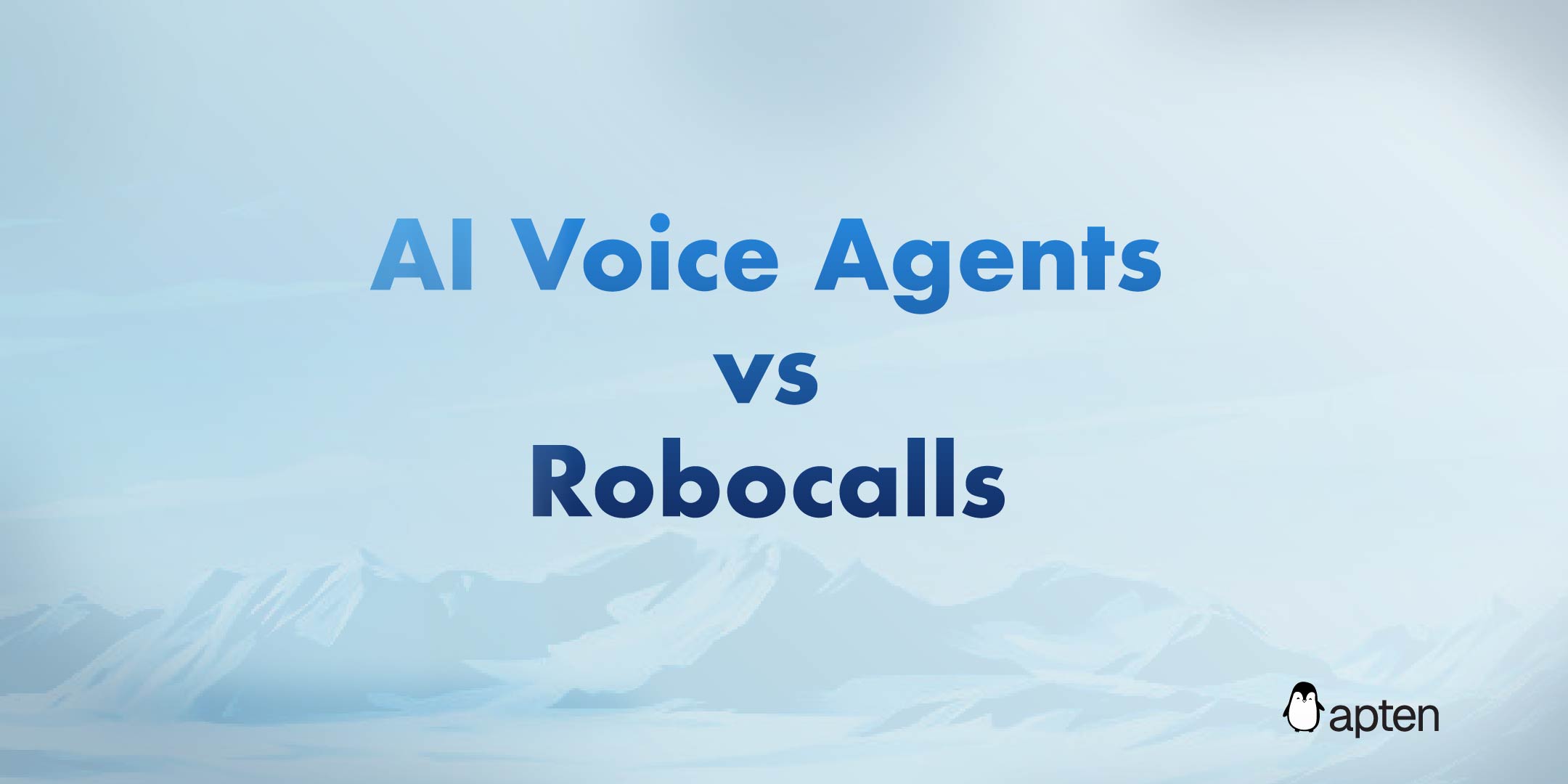How AI SMS & Voice Agents Improve ROAS
Want to boost your ad performance? AI SMS and voice agents can help improve your Return on Ad Spend (ROAS) by increasing engagement, automating lead responses, and personalizing communication. Here's how:
Higher Engagement: AI uses SMS's 98% open rate to deliver personalized messages, leading to better response rates and higher conversions.
24/7 Lead Management: AI agents respond instantly, qualify leads, and follow up, even after hours, improving conversion rates by up to 30%.
CRM Integration: Connecting AI with platforms like Salesforce enables seamless data sharing and faster response times, increasing sales by 15%.
Cost Savings: Automating lead screening and communication can reduce costs by up to 83% while increasing team efficiency.
Some companies have seen ROAS improvements of 252% and revenue boosts of up to 37%. AI tools are no longer optional - they’re essential for staying competitive in digital advertising.
Quick Overview:
Feature | Benefit | Example |
|---|---|---|
Smart Personalization | Higher click-through and purchase rates | Reebok saw a 115% revenue increase |
Instant Lead Response | 24/7 availability and faster conversions | Real estate firm improved conversion by 30% |
CRM Integration | Streamlined workflows and better targeting | Sales increased by 15% with Dasha.ai |
Dead Lead Recovery | Re-engage lost leads effectively | Fella Health grew revenue by 37% |
AI-powered SMS and voice agents are reshaping how businesses maximize their ad spend, making every dollar count. Let’s dive into the details.
Core Functions of AI SMS & Voice Agents
AI SMS and voice agents enhance return on ad spend (ROAS) by focusing on three main areas.
Smart Message Personalization
These agents use customer behavior and history to craft messages that feel relevant and timely. For example, during Attentive's beta testing (concluding in March 2024), brands like Reebok, Brooks Brothers, and Forever 21 experienced impressive results: revenue increased by 115%, purchase rates by 117%, and click-through rates by 120%.
To keep customers engaged, sending 3–5 messages per week is considered ideal [2]. Attentive CEO Amit Jhawar highlights the importance of balance:
"A hard lesson a lot of brands learn early... If you over-message people who are not interested in your product, you can burn a lot of money quickly." [2]
This tailored approach ensures leads stay engaged without overwhelming them.
Continuous Lead Response
Beyond personalization, AI agents shine in maintaining engagement by responding instantly, no matter the time of day. According to MIT research, businesses are 21 times more likely to connect with a lead if they respond within five minutes of initial contact [5]. AI agents handle tasks like:
Instant replies to inquiries
Automated lead qualification
Consistent brand tone
24/7 availability, including after-hours
For instance, a real estate company using AI agents for after-hours inquiries saw a 30% boost in conversion rates, directly improving ROAS through round-the-clock responsiveness [4].
CRM Platform Integration
Integrating AI agents with CRM systems like Salesforce or HubSpot takes their performance to the next level. This connection creates a unified customer data system, enabling smoother workflows. A dasha.ai case study revealed that CRM-integrated AI agents reduced response times by 20%, increased sales by 15%, and improved customer satisfaction [6]. By triggering automated conversations as new leads enter the CRM [3], businesses can analyze data in real time and deliver tailored recommendations, ensuring no lead is missed and maximizing ROAS potential.
ROAS Improvement Methods
AI-powered SMS and voice agents are game-changers for boosting ROAS (Return on Ad Spend). By refining lead management and communication, these tools help businesses get the most out of their advertising dollars.
Lead Screening Automation
AI agents make lead qualification a breeze, allowing sales teams to focus on the most promising prospects.
Key features of automated lead screening include:
Responding to initial inquiries instantly
Conducting natural, conversational qualification
Routing qualified leads directly to sales teams
Collecting structured data for better targeting
Once lead screening is automated, the next step is ensuring messages reach prospects at the perfect time.
Message Timing Analysis
AI tools analyze customer behavior to determine the best times to send messages. Timing is everything when it comes to boosting engagement and conversions.
Here’s a breakdown of optimal messaging times:
Message Type | Best Time | Best Days | Key Benefits |
|---|---|---|---|
SMS Marketing | 11 AM - 4 PM | Monday, Tuesday | Higher revenue per send |
Email Marketing | 8 AM - 4 PM | Friday | Increased conversions, fewer opt-outs |
Click-through Optimization | Varies | Tuesday, Thursday | Better engagement rates |
Dead Lead Recovery
Recovering "dead" leads is another area where AI shines. Businesses have seen impressive results by re-engaging lost prospects:
Fella Health boosted monthly revenue by 37% with SmartRecover [7].
XYON Health increased abandoned cart recovery by 60% [7].
InsideTracker improved funnel conversions by 24% through personalized SMS follow-ups [7].
One standout example is a major insurance company that used Gnani.ai's AI voicebots to reconnect with lapsed policyholders. This effort grew their customer base by 15% and added $800,000 in quarterly premium income [8].
"Besides converting almost twice as many abandoned checkouts vs. email, we find our customers LOVE talking to a real person before purchasing." - Emily Todd, Member Growth, Alloy Womens Health [7]
Setting Up AI SMS & Voice Agents
Picking Your AI Platform
Choosing the right AI platform can make a big difference in your return on ad spend (ROAS). Look for platforms equipped with tools for measurement and predictive modeling. Here are some key features to evaluate:
Feature | Impact on ROAS | Priority |
|---|---|---|
Real-time Analytics | Tracks performance instantly | High |
CRM Integration | Ensures smooth data sharing | High |
Automated Bidding | Adjusts bids dynamically | Medium |
Multi-channel Support | Provides a unified view of customers | Medium |
Custom Reporting | Helps assess ROI effectively | High |
Platforms that incorporate machine learning can help fine-tune your campaigns. Mike Eisele, VP of Business Development at KSGM, explains:
"Pecan can see around the corner to those campaigns that may be outperforming longer term, without having all the actual revenue signals there early on" [9].
Once you've selected a platform, the next step is defining your brand's voice to maintain consistent communication.
Setting Brand Voice Guidelines
Creating clear guidelines for your brand's tone is essential. Focus on these areas:
Voice Characteristics: Identify the language style and tone that align with your company’s values and personality.
Scenario-Based Responses: Prepare templates for various situations to ensure consistent messaging across customer interactions.
Personalization Parameters: Outline how to use customer data to tailor messages while staying true to your brand identity [10].
With these guidelines in place, you’ll ensure your AI agents communicate effectively and consistently.
Performance Tracking
Tracking performance is key to making sure your AI strategy continues to improve ROAS. Monitor these metrics to measure your AI agents' effectiveness:
Metric Category | Key Indicators |
|---|---|
Response Speed | Lead engagement time, hold times |
Conversation Quality | Engagement metrics, user satisfaction, conversation length |
Task Completion | Resolution accuracy, completion rates |
Business Impact | Conversion rates, ROI, SMS open rates (98%) [11] |
Regularly reviewing these metrics and making necessary adjustments will help your AI agents stay on track and deliver better results over time.
Measuring AI Impact on ROAS
Success Metrics
When evaluating the effect of AI SMS and voice agents on your ROAS, focus on these performance indicators:
Metric Category | Key Indicators |
|---|---|
Response Efficiency | Speed to lead, hold times |
User Engagement | Customer engagement, conversation completion |
Conversion Impact | Sales conversion rate, cost per acquisition |
Cost Efficiency | Customer acquisition and support costs |
Quick response times are especially critical - 70% of customers rank speed as a top priority in their experience [12].
Real Results
Case studies demonstrate how AI-driven strategies can boost ROAS:
Henry Rose, Michelle Pfeiffer's fragrance brand, partnered with an AI marketing solution and achieved:
A 32.8% increase in ROAS
A 15.4% decrease in cost per action
1.9 million impressions [15]
Day 7 Interactive implemented Meta's AI platform, leading to:
A 252% uplift in ROAS
A 92% increase in conversions within two months [14]
"Working with Upp. has enabled us to use Google Shopping to hit our business goals. If we need to drive straight ROAS, Upp.AI hits the targets we set. In early December we needed to hit a 4 x return and within 2 weeks we were hitting this consistently."
– Ryan Coleman, eCommerce marketing manager, Roman [13]
These examples highlight how strategic use of AI can drive measurable improvements in performance.
Optimization Steps
To maximize ROAS with AI agents, consider these steps:
Step | Action | Expected Outcome |
|---|---|---|
Data Collection | Gather customer demographics and behavior data | Better targeting |
Market Segmentation | Group buyers by needs and funnel position | More personalized campaigns |
Campaign Automation | Monitor ad spend and performance continuously | Reduced inefficiencies |
Predictive Modeling | Build models to anticipate customer behaviors | Higher conversion rates |
For example, KSG Mobile used Pecan AI's LTV models in Q1 2023 to forecast performance and optimize investments, achieving stronger ROAS results [9].
Integrating AI agents with tools like Google Analytics can provide a full view of customer journeys. This approach helped companies like Bukalapak achieve a fivefold improvement in ROAS by using data insights to refine their campaigns [14].
Conclusion
This guide has covered how AI agents refine communication, improve engagement, and increase return on ad spend (ROAS). By automating customer interactions, AI-powered SMS and voice agents help businesses achieve better results. Companies like KSG Mobile, using predictive lifetime value (LTV) models, and insights from experts like Mike Eisele [9], highlight how strategic use of AI leads to measurable success.
"Pecan can see around the corner to those campaigns that may be outperforming longer term, without having all the actual revenue signals there early on" [9].
To get the most out of AI agents and maximize ROAS, focus on these proven strategies:
Strategy | Impact |
|---|---|
24/7 Availability | Captures and qualifies leads around the clock |
Targeted Advertising | Reduces wasted ad spend in a $6.149B industry |
Creative Optimization | Can boost ROAS by up to 800% in ecommerce |
Predictive Analytics | Improves forecasting for campaign performance |
Together, these approaches highlight a future where AI isn’t just helpful - it’s a competitive necessity. Combining always-available responsiveness, precise targeting, creative adjustments, and predictive tools doesn’t just cut costs - it drives stronger customer engagement and higher conversions.
Voice-enabled tools are already gaining traction, with 22% of recent YC startups incorporating them [16]. To succeed with AI agents, set clear goals, manage data effectively, and continuously refine your approach. While AI can handle many tasks, human oversight and a commitment to privacy are key to ensuring these tools complement, rather than replace, personal interactions.
The data and examples shared here emphasize one thing: with billions lost annually in inefficient digital advertising, AI-driven SMS and voice solutions are becoming essential for staying competitive.



